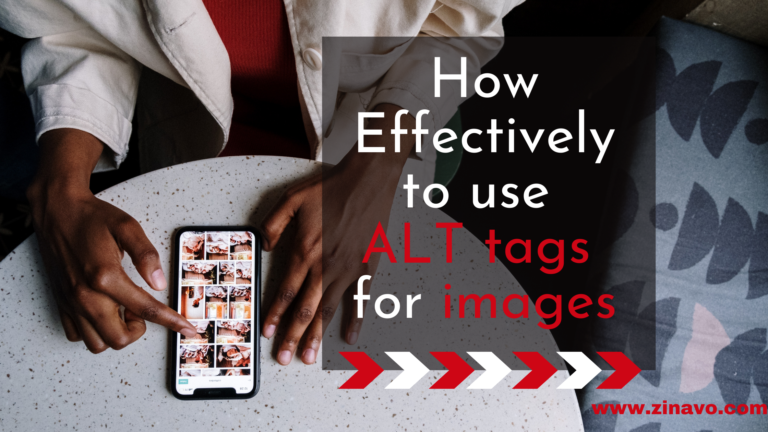Why Image Alt Text is Important for SEO?
What is Alt Text?
The alt text, also known as the alt attribute, alt description or alt tag, describes what an image shows. The purpose of setting alt text is to make sure the blind and visually impaired can understand what an image depicts when the screen reader relays the text snippet to them, thus making internet browsing more enjoyable for them. The alt text on your website, however, is crucial beyond that vital function in enabling search engines to accurately interpret and acknowledge your website images when they analyze your content in response to a search.
It primarily uses:
- Alternative text should always be added to photos as part of a web accessibility strategy. An alt attribute will be read by visually impaired users using screen readers to better understand an on-page image.
- When an image cannot be loaded, alt text will be displayed instead.
- Search engine crawlers can use Alt text to understand an image better, so they can index it properly.
Alt text example
<img src=”marketing.png” alt=”best marketing services”>
Exactly why is alt text important?
- Accessibility
- User Experience
- Image Traffic
What’s the best way to write good alt text?
Describe the image as specifically as possible
For users who are unable to see images, alt text is designed mainly to provide text explanations of them. In the case when an image is just for design purposes and does not convey any meaning, it should reside within the CSS, not HTML.
Keep it (relatively) short
It is best to keep alt text to 125 characters or less because most screen readers stop reading at that point.
Use your keywords
You can include alternative text on a page as another way to include your target keyword, and thus give search engines another indication that your page is highly relevant to a particular search query. While you should first describe and provide context to the image, you should attempt to include your keyword in the alt text of at least one image on your page if possible.
Avoid keyword stuffing
Although Google won’t penalize you for poorly written alt text, you will lose points if you use your alt text as an opportunity to stuff as many relevant keywords into it as you can. Write descriptive alt text that describes the image and, if possible, includes your target keyword, and leave it at that.
Don’t use images as text
This is less of an alt text-specific best practice and more of an SEO-friendly web development company in bangalore. Search engines are not able to read text within images, so you should avoid using images as replacements for words. Explain what your photo says in your alt text if necessary.
Don’t include “image of,” “picture of,” etc. in your alt text.
Don’t forget longdesc=””. Explore using the longdesc=”” tag for more complex images that require a longer description.
Don’t neglect form buttons
When a form on your website uses an image as its “submit” button, include an alt attribute. A button’s alt attribute should describe what the button does, such as “search”, “apply now”, “sign up”, etc.
Make sure your images have alt tags!
You should always set an alt tag when you upload an image. Adding alt text to your images is a very important aspect of optimizing your website for search engines. The next time you know that you haven’t been setting alt tags for your images, set aside time to go through them and add relevant, descriptive alt text.
For more information about adding alt text to images, please contact the Zinavo team who will be able to assist you.



